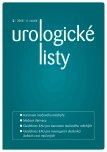Current practice in the management of superficial bladder cancer in the Netherlands and Belgian Flanders: a survey
Authors:
J. A. Witjes; D. O. T. M. Melissen; L. A. L. M. Kiemeney
Published in:
Urol List 2008; 6(2): 9-15
Overview
Objective.
Because there is no national guideline for the diagnosis, therapy and follow up of (superficial) bladder cancer in the Netherlands and Belgium, the actual patient management may differ between urologists. The purpose of this study is to get insight in the current way urologists diagnose, treat and follow patients with superficial bladder cancer.
Methods.
All practising urologists in the Netherlands (n = 293) and Flemish speaking Belgium (Flanders, n = 223) received a questionnaire with regard to the current management of patients with superficial bladder cancer. The results were compared with the guidelines provided by the European Association of Urology (EAU). Also a comparison was made between the two countries and between university and community hospitals.
Results.
The results show a wide variation in current practice for superficial bladder cancer. Although the majority of urologists do not follow the EAU guidelines, current practice roughly matches these guidelines. There are no major differences between the two countries or between different types of hospitals. Discrepancies between current practice and guidelines are mostly too frequent use of techniques for the diagnosis, treatment and follow-up.
Conclusion.
In all, there is a need for clear guidelines in superficial bladder cancer and an effective implementation of such guidelines into everyday practice.
Key words.
bladder cancer, diagnosis, therapy, follow up, survey
Sources
1. Oosterlinck W, Lobel B, Jakse G, Malmstrom PU, Stockle M, Sternberg C. Guidelines on bladder cancer. Eur Urol 2002; 41: 105–112.
2. Smith JA jr, Labasky RF, Cockett AT, Fracchia JA, Montie JE, Rowland RG. Bladder cancer clinical guidelines panel summary report on the management of nonmuscle invasive bladder cancer (stages Ta, T1 and TIS). The American Urological Association. J Urol 1999; 162: 1697–1701.
3. Wazait HD, Al Bhueissi SZ, Patel HR, Nathan MS, Miller RA. Long-term surveillance of bladder tumours: current practice in the UK and Ireland. Eur Urol 2003; 43: 485–488.
4. Joudi FN, Smith BJ, O'Donnell MA, Konety BR. Contemporary management of superficial bladder cancer in the United States: a pattern of care analysis. Urology 2003; 62: 1083–1088.
5. Schrag D, Hsieh LJ, Rabbani F, Bach PB, Herr H, Begg B. Adherence to surveillance among patients with superficial bladder cancer. J Natl Cancer Inst 2003; 95: 588–597.
6. Snyder C, Harlan L, Knopf K, Potosky A, Kaplan R. Patterns of care for the treatment of bladder cancer. J Urol 2003; 169: 1697–1701.
7. Chung D, Hersey K, Flehner N. Differences between urologists in United States and Canada in approach to bladder cancer. Urology 2005; 65: 919–925.
8. van Rhijn BW, van der Poel HG, van der Kwast TH. Urine markers for bladder cancer surveillance: a systematic review. Eur Urol 2005; 47: 736–748.
9. Sylvester RJ, Oosterlinck W, van der Meijden AP. A single immediate postoperative instillation of chemotherapy decreases the risk of recurrence in patients with stage Ta T1 bladder cancer: a meta-analysis of published results of randomized clinical trials. J Urol 2004; 171: 2186–2190.
10. Obek C, Shelfo SW, Korman HJ, Soloway MS. Intravesical therapy for transitional cell carcinoma of the bladder: the community practice. Urology 1999; 53: 82–87.
11. Ghoneim MA, el Mekresh MM, el Baz MA, el Attar IA, Ashamallah A. Radical cystectomy for carcinoma of the bladder: critical evaluation of the results in 1,026 cases. J Urol 1997; 158: 393–399.
12. Esrig D, Freeman JA, Stein JP, Skinner DG. Early cystectomy for clinical stage T1 transitional cell carcinoma of the bladder. Semin Urol Oncol 1997; 15: 154–160.
13. Herr HW, Sogani PC. Does early cystectomy improve the survival of patients with high risk superficial bladder tumors? J Urol 2001; 166: 1296–1299.
14. Brown FM. Urine cytology. Is it still the gold standard for screening? Urol Clin North Am 2000; 27: 25–37.
15. Lotan Y, Roehrborn CG. Sensitivity and specificity of commonly available bladder tumor markers versus cytology: results of a comprehensive literature review and meta-analyses. Urology 2003; 61: 109–118.
16. Holmang S, Hedelin H, Anderstrom C, Holmberg E, Johansson SL. Long-term followup of a bladder carcinoma cohort: routine followup urography is not necessary. J Urol 1998; 160: 45–48.
17. Solsona E, Iborra I, Ricos JV, Dumont R, Casanova JL, Calabuig C. Upper urinary tract involvement in patients with bladder carcinoma in situ (Tis): its impact on management. Urology 1997; 49: 347–352.
Labels
Paediatric urologist UrologyArticle was published in
Urological Journal

2008 Issue 2
Most read in this issue
- Non-invasive blader cancer carcinoma – when should we start adjuvant intravesical instillation therapy and what to do in case of failure?
- Urinary diversion after cystectomy
- Complications of cystectomy and urinary diversion
- Sexual function sparing radical cystectomy
